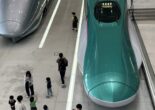Going from an army exercise field to the biggest indoor arena in Tokyo is quite a transition, but that is what has happened to the Tokyo Dome area. The Ibaraki Tokugawa palace grounds became an amusement and entertainment park centered around baseball. But with some of the most innovative attractions around. Read on to find out more.
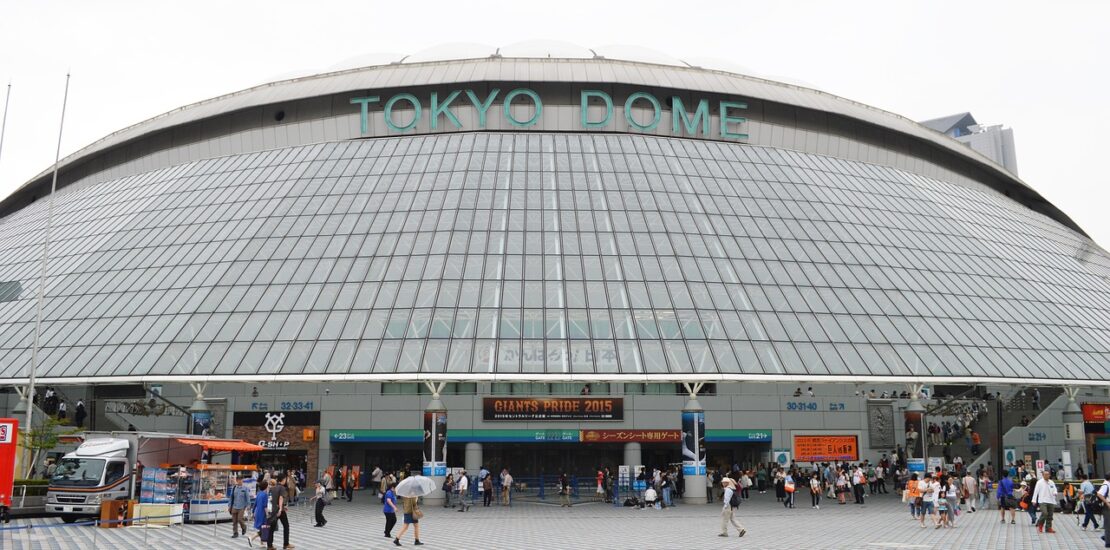
What’s the history of Tokyo Dome? When the reign of the shogun came to an end, so did that of his vassals. And when there were no regional lords anymore, there was no need to keep their families as hostages in Edo anymore. The new government confiscated all the properties of the old lords, and either sold the land, rented it out, or used it for army barracks.
From the shogun palace to the army barracks
That was the fate of the palace and gardens of the Ibaraki branch of the ruling Tokugawa family. If you consider that both the Korakuen garden (behind Tokyo Dome) and the entire Tokyo Dome complex area were the palace grounds, you can get a sense of how vast the palaces that covered Edo (as Tokyo was named before it became Tokyo) was.
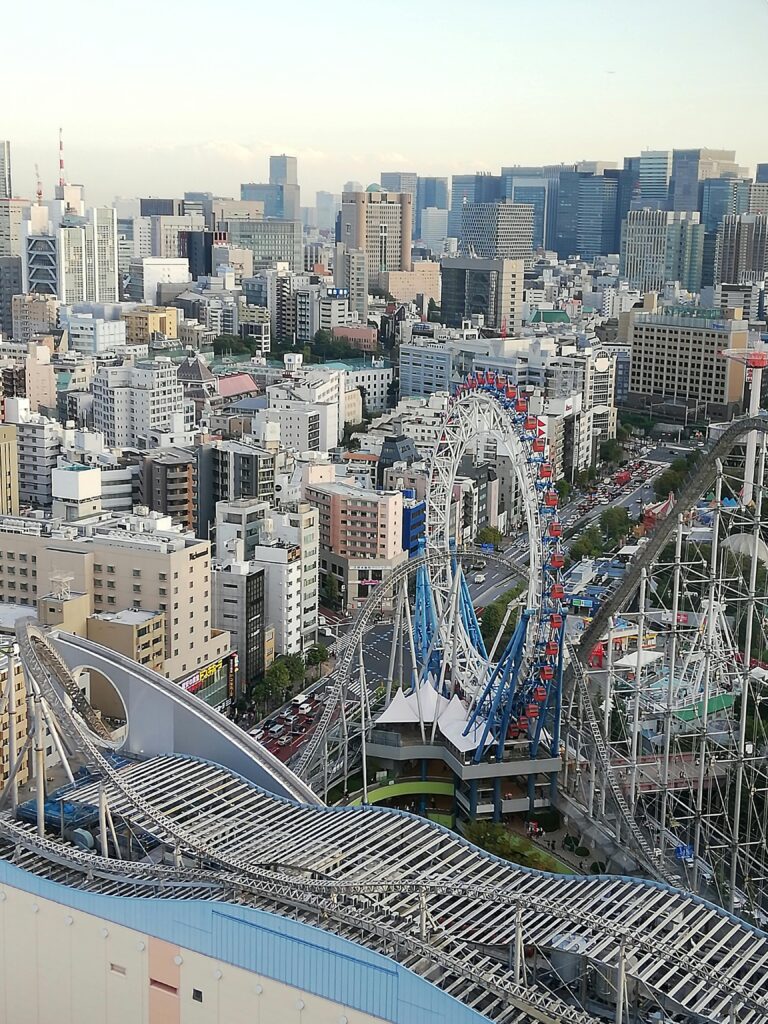
Tokyo Dome itself, in fact, is so big that it is usually used in newscasts and other popular communications to measure the size of an area. “Ten times as large as the Tokyo Dome” is a frequent statement on TV when it comes to disaster areas and other similar comparisons.
The ”big egg” is huge.
And the dome itself is huge. A frequent concert venue, it is so large that it has to be a very popular act to fill its more than 50000 seats.
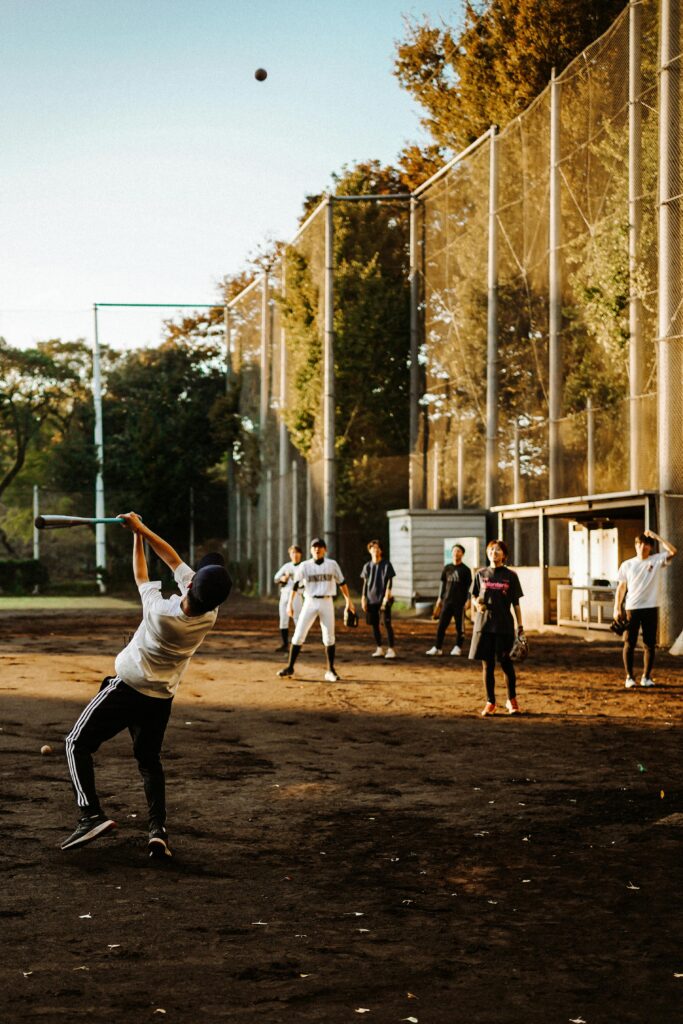
The dome was built as a baseball arena (replacing the old arena, which stood where the hotel is now). The first baseball games in Japan, and the foundation of the first professional baseball team, were all nearby. Baseball became a popular sport with the armed forces thanks to their many American instructors, but the popularity of baseball in Japan has survived both militarism and war, and it is still one of the most popular children’s sports in Japan.
Japanese baseball hall of fame in the Dome
On the second floor of the entrance to the Tokyo Dome itself, if you come from the plaza, you will find the Japanese Baseball Hall of Fame, with exhibits celebrating the great players of the league — most recently, of course, Shouhei Otani.
The Tokyo Dome is also the home ground for the Yomiuri Giants, one of several professional baseball teams in Tokyo and usually considered the leading ones, except that they frequently lose to Osaka’s Hanshin Tigers, a source of grief for all Tokyoites.
The dome itself is actually a tent, since the roof is a canvas held in place by the pressure inside the dome (you do not notice anything as a spectator or player).
Amazing amusement park
But unless you are going to a sports event or a concert with the likes of Michael Jackson, Mariah Carey, Madonna, or Blackpink (all of whom have performed here), you are not likely to come as far as the interior of the dome. Because outside is one of the most amazing amusement parks in central Tokyo (to be fair, one of two).
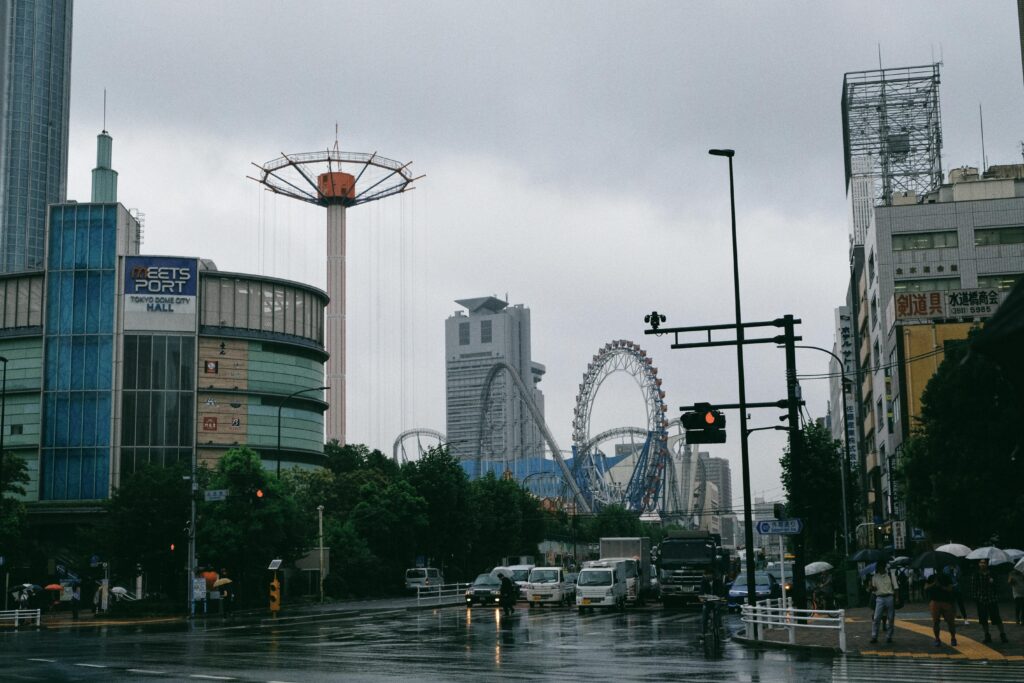
The entertainment begins almost as you exit Suidobashi Station (on JR: the Sobu line) and cross the bridge towards Tokyo Dome. You enter a restaurant street with several Western restaurants, including a TGI Fridays, but the main attraction of this part of the Tokyo Dome area is betting on horse races. The races themselves are, of course, held outside the Tokyo city center, and this is one of the few places you can bet on races all over Japan. Betting on horse races is one of the few legal forms of betting in Japan, and it is highly regulated.
Greeted by bug-eyed heroes at Tokyo Dome
Pass that, and you are greeted by actual heroes. At least some days. One of the attractions in the Tokyo Dome complex is a theatre where live action heroes from the Kamen Rider series (the rights are owned by Yomiuri Shinbun, the sponsor of the Tokyo Dome baseball team) battle bad guys. There may not be a show every day, so check in advance.
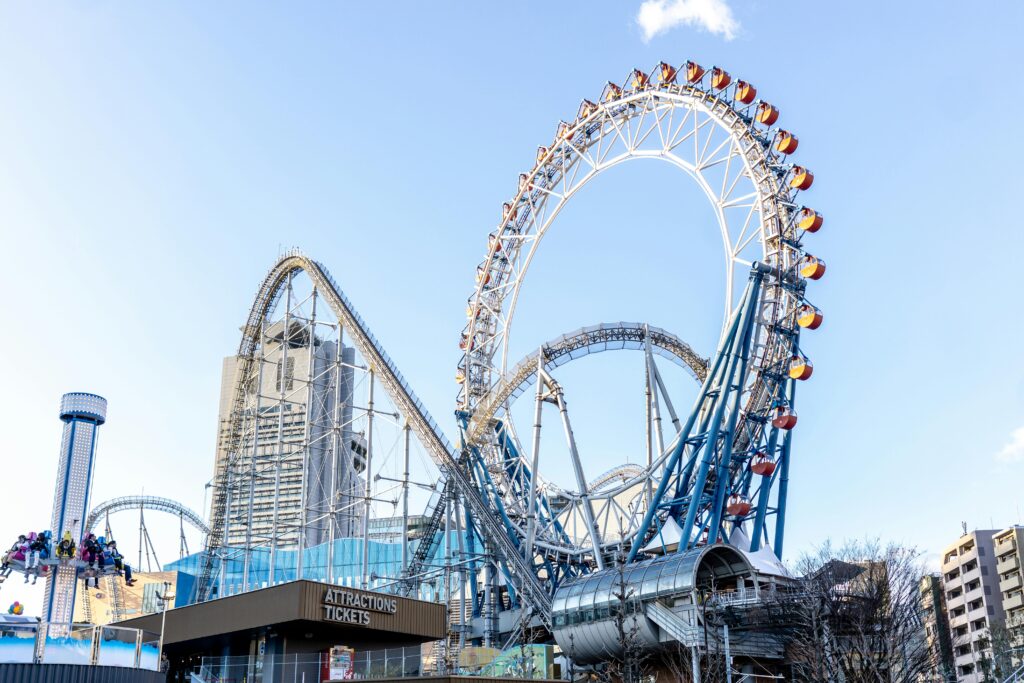
The attractions in the Tokyo Dome amusement park are otherwise fairly ordinary: a swinging Viking ship, swings that spin around while they go around, merry-go-rounds, and common staples from other fairgrounds. The shooting games are quite innovative, though. You have to get tickets for each attraction, and even if there are discounts for children, it can run away pretty fast, as many of the attractions are geared towards children. The indoor playground is quite extensive and very fun for children up to around 10. Take it as a tip for a rainy day.

The most famous attraction in the Tokyo Dome is the roller coaster, which runs through a hole in the LaQua spa building. It is actually located in a part of the park adjacent to the Tokyo Dome, but separated by a main road with a bridge for pedestrians to cross. Here is also where you will find the water slides, which are great fun in summer, although being splashed is not at all as interesting in winter.
Indoor petting zoo
But there are several other attractions in the area, including a petting zoo and a bowling alley (with a bar). For those able, there is a skating rink and an activity center with climbing walls and indoor golf courses. And for grownups, the LaQua spa is quite a relaxing experience. A traditional Japanese bath, men’s and ladies’ departments are separate, and the main activities are either sweating in a sauna or soaking in a basin of hot water. If you can let your kids loose for a few hours, this is a good way of winding down.

The other attractions in the Tokyo Dome area include a VR ride around the Solar System, and seasonal attractions like a Halloween haunted house, which used projection mapping in the most innovative way to make the experience truly scary.
The seasonal attractions are not limited to the attraction halls, however. The entire area is turned into a beer garden for the Oktoberfest (which in Japan takes place at the beginning of October), but if you do not feel like the seasonal offerings are something for you, there are several very good Japanese, Chinese, and Western restaurants in the LaQua part of the park, including a Bubba Gump shrimp restaurant.
Stay tuned for more exciting content like this! Follow us on our social media platforms and check out our blog regularly to stay updated on the latest news, trends, and insider stories from Japan. Don’t miss out on future updates — sign up for our newsletter for exclusive content delivered straight to your inbox!

